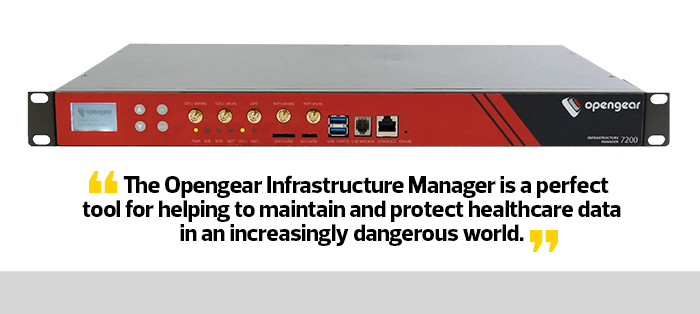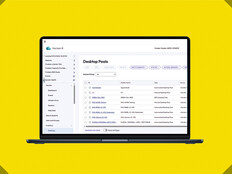Streamline Network, Server and Power Infrastructure Information
Next-generation infrastructure management solutions like the Opengear Infrastructure Manager offer features needed to streamline network, server and power infrastructure information, especially in data centers or remote environments, such as offsite clinics.
Smart out-of-band (OOB) management with failover to cellular networks in emergencies empowers IT administrators to monitor and remediate threats from anywhere and at any time.
It was a treat to test one of the device’s main capabilities: the intelligent OOB management. The OOB feature helps hospitals maintain data continuity by putting some or all activity outside of a specific telecommunications frequency band. Using Opengear’s Smart Out of Band feature, hospitals benefit from physical connections to network devices managed via a secure remote link. This reduces IT reliance on power cycling, third-party remote management and many other standard but sometimes unwieldy processes.
Coupled with Lighthouse 5 management software, which streamlines network configuration and rulesets, the OOB feature enables the entire suite to be managed from a centralized portal. It’s also suitable for the high-performance computing applications often found in medical research.
An Adaptable Infrastructure Manager Good for Continuous Operations
The Opengear Infrastructure Manager comes with a 48-port serial console server but is also available in 16-port models with USB 2.0 console ports and 16-port versions with a 24 port gigabit Ethernet switch for larger installations.
Each Opengear device also boasts a dual network connection capability with built-in fiber and small form-factor pluggable (SFP) capabilities for hot-swappable interfaces. The SFP ports on the Opengear device enable the switch to connect to fiber or Ethernet cables regardless of any differences in cable types or speeds. Optionally, it can also roll over to a 4G LTE cellular network in emergencies, making it a good choice for continuous operations.












